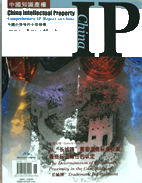
What are the criteria used to determine trademark proximity? Are “Changcheng” and “Jiayu Changcheng” proximate? These questions are the focus of the dispute in the instant case and the key to determine whether the defendants are infringers.
The plaintiff argues that several criteria concerning trademark proximity have arisen out of China’s judicial and administrative practices. According to the relevant provisions of the Trademark Law and Article 9 and 10 of the Interpretation, regarding the proximity between “Changcheng” and “Jiayu Changcheng” in the case, the following factors should be considered:
1. The distinctiveness of the constructive elements of the infringed trademark
One of the essential issues is determining whether “Changcheng”, as a trademark, has distinctiveness. For a trademark, distinctiveness can be divided into original distinctiveness and subsequent distinctiveness. In terms of original distinctiveness, “Changcheng”, as a trademark, seems unoriginal because its constructive elements, such as its text and graphic, are well known among the public and widely used. However, it becomes original when the plaintiff combines these constructive elements – the Chinese characters, the graphic, and the English term “Great Wall” - into a whole and employs the combination for its wine products. “Changcheng”, as a trademark, has attained sufficient distinctiveness after more than 20 years of use during which the plaintiff managed to maintain a stable market share, made a huge financial investment and increased its level of quality management. In the wine market, the relationship between the “Changcheng” trademark, and the plaintiff’s wine has led consumers to a fixed association between the two. It is obvious that “Changcheng”, as a trademark, has its differentiating and designating functions. Its distinctiveness is beyond doubt. Moreover, in China, a number of trademarks have achieved their distinctiveness subsequently. For such symbolic words as “Zhonghua” or “Hongqi” that are popular among the public, their distinctiveness has resulted from the originality of their continuous use on authorized commodities. Therefore, it is legally unfounded to claim that “Changcheng”, as a trademark, does not have distinctiveness.
2. The market reputation of the infringed trademark
The market reputation of the “Changcheng” trademark is also beyond doubt. Otherwise, in such a short period of just a few years, the Trademark Office could not have rejected or dismissed more than 200 applications for trademarks that contain the characters of “Changcheng” or “Great Wall” graphic. The trademark protection practice in China also demonstrates that a trademark, when it is authorized and used, tends to attain a higher level of fame, and therefore, if more applications for similar trademarks are filed by various means, more protections for the trademark are recorded, and the commodity under the trademark enjoys a higher market share. The “Changcheng” trademark has all the characteristics of a famous trademark. Its market reputation is certainly indisputable, as the State Administration for Industry and Commerce has appraised it as a famous trademark.
3. Judge the similarity or identity of the constructive components of the alleged infringed and infringing trademarks by taking into account the above factors
The comparison of constructive elements of trademarks shall never be divorced from the distinctiveness and market reputation of the alleged infringed trademarks; otherwise, it is a mechanical or unscientific comparison. The constructive elements have varying impacts on the distinctiveness of trademarks. For a given trademark, each such impact should be analyzed, i.e. the analysis of distinctiveness should be done on each text or graphic that constructs the trademark. As far as this case is concerned, the “Changcheng” trademark consists of the Chinese characters of “Changcheng”, the graphic “Changcheng”-- the Great Wall, and the English word “GREAT WALL”. All these three constructive elements indicate “Changcheng” - the Great Wall. From whatever perspective, the distinctiveness of plaintiff’s trademark “Changcheng” is about “Changcheng” - the Great Wall. Therefore, these three elements have nearly the same function; the Chinese word “Changcheng”, which highly readable in Chinese, is particularly distinctive. The defendant’s “Jiayu Changcheng and graphic” also consists of a text and a graphic, but are different from the plaintiff’s “Changcheng” trademark as a whole.
However, as for the constructive elements of “Jiayu Changcheng and graphic”, its distinctiveness is also based on “Changcheng” - the Great Wall; and consumers tend to associate the text or graphic with “Changcheng” - the Great Wall, instead of “Jiayu”. This is indisputable and also accepted by the defendant. Therefore, the defendant has agreed that the Chinese characters “Changcheng”, as in the plaintiff’s “Changcheng” trademark, has distinctiveness and an association with the wine market. If the use of “Jiayu Changcheng and graphic” is legally sustained, the same distinctiveness that exists between the defendant’s “Jiayu Changcheng” and plaintiff’s “Changcheng” would make it extremely likely that consumers will confuse one with the other. Anyone who uses a trademark containing the same distinctive elements of another registered trademark would surely unjustly benefit from the earlier investment in material and human resources of the owner of the registered trademark. This fact also damages the existing “designating” and “associating” effect of the registered trademark on the consumers. For this reason, the Supreme People’s Court states clearly in the Interpretation that in order to determine trademark proximity, the market reputation and distinctiveness of the trademarks as well as their constructive elements shall be considered. As Jiayu Company’s “Jiayu Changcheng and graphic” contains as its distinctive element “Changcheng” which is also the most distinctive textual element of COFCO’s registered trademark "Changcheng Pai", it may easily lead to confusion among the relevant public in the market.
|
Copyright © 2003-2018 China Intellectual Property Magazine,All rights Reserved . www.chinaipmagazine.com 京ICP备09051062号 |
|
|



